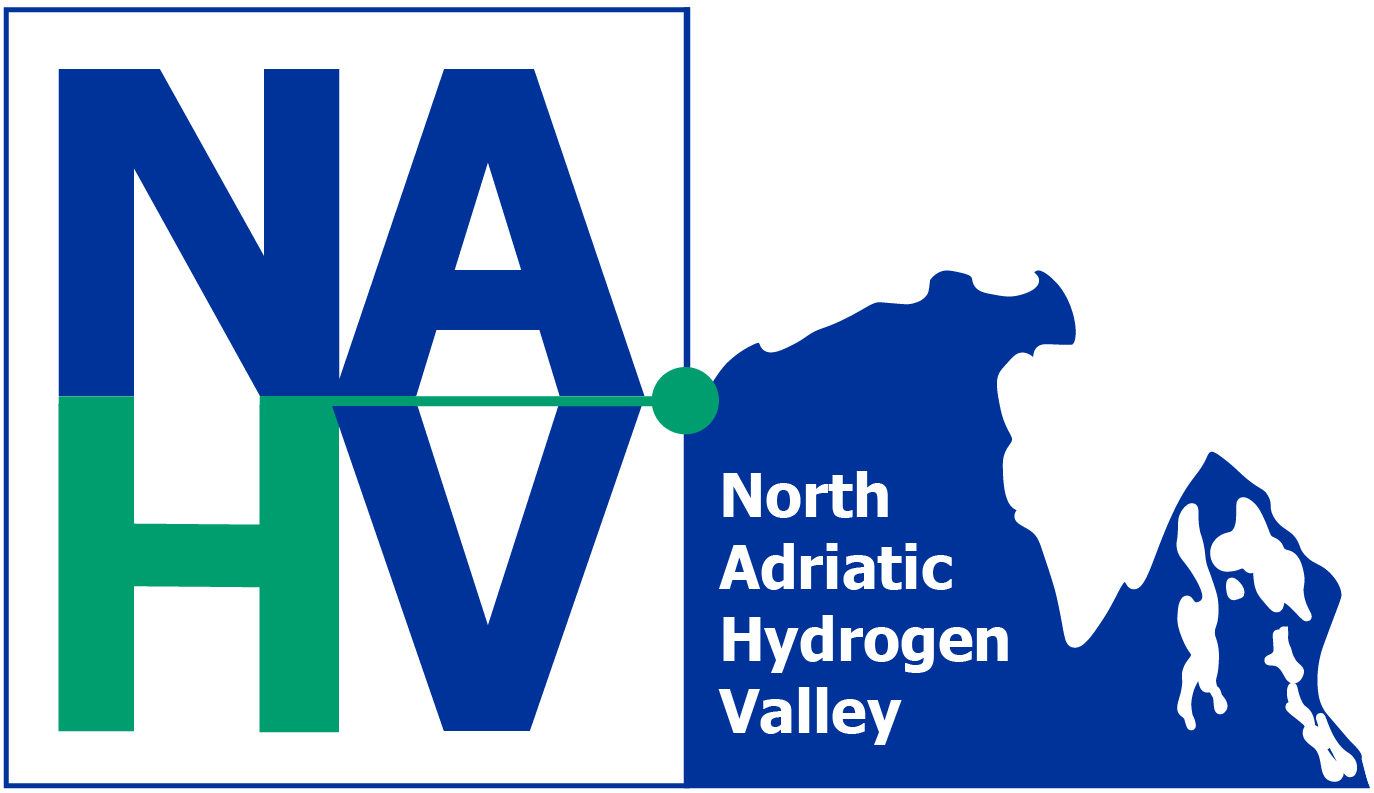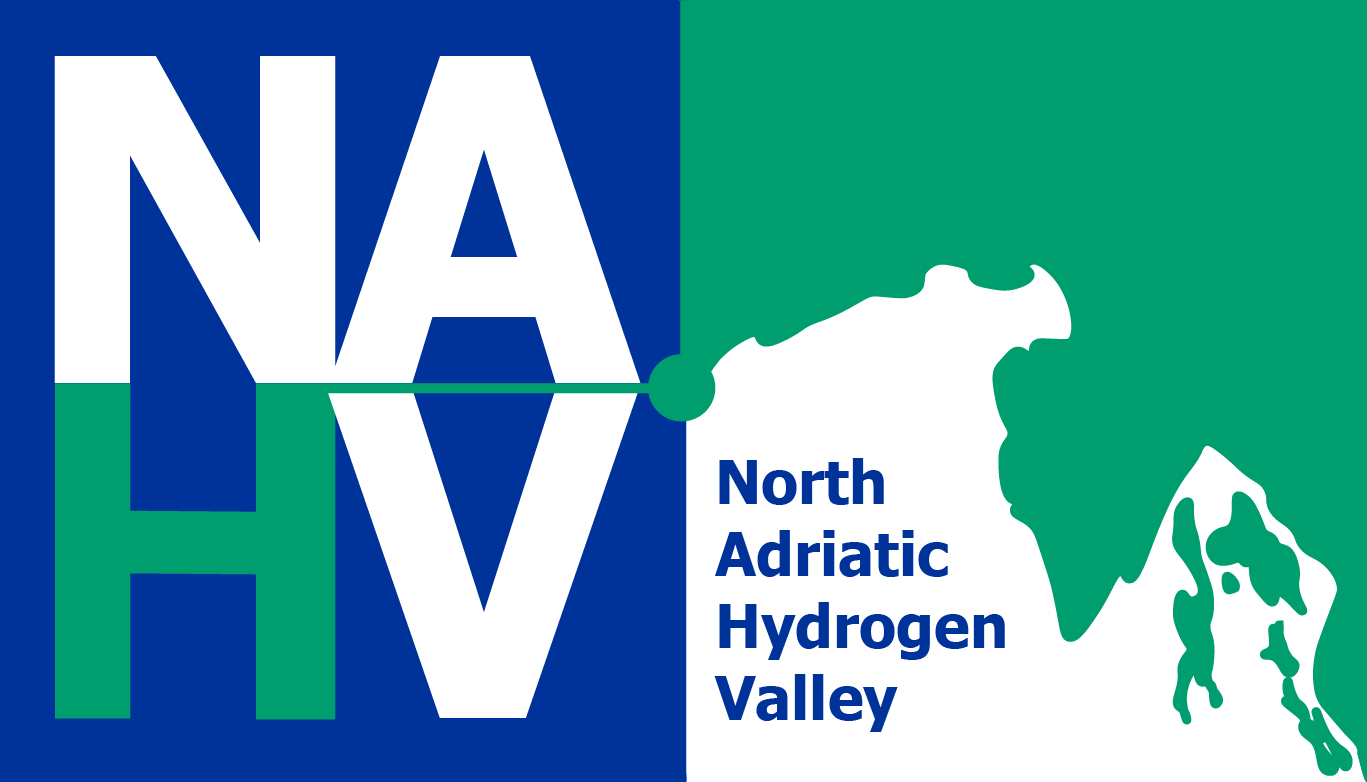FAQ

The North Adriatic Hydrogen Valley (NAHV) is the first transnational hydrogen valley in the EU. It unites two countries, Slovenia and Croatia, and one region, the Autonomous Region of Friuli Venezia Giulia in Italy.
The NAHV enjoys great national and regional political support, as well support from the EU, since it contributes to the achievement of the EU’s goals in hydrogen production and use.
The NAHV has obtained a €25 million grant from the CHJU. At the time of application, the project was supported by 46 European stakeholders, including electricity and gas transmission system operators, organizations, associations, regional agencies, and existing hydrogen valleys.
When applying for the project, all three countries presented the possibility of grants from various sources, including funds from the Cohesion and Regional Fund, the Recovery and Resilience Plan, and the state budget. In addition, we have identified other possibilities for obtaining grants, including the Modernization Fund (in Slovenia and Croatia, which are beneficiaries of these funds), the Innovation Fund, the Instrument for the Integration of Europe (CEF), and the European Hydrogen Bank.
A RESEARCH AND INNOVATION PROJECT
The NAHV envisages a wide area of production and distribution of renewable hydrogen, which will include all three participating countries: around 3500 t/year will be produced in Slovenia (of which HSE will contribute up to 3000 t/year), 1000 t/year in Croatia, and slightly more than 1200 t/year in Italy. Of the total amount of renewable hydrogen produced, heavy industry could consume around 3,000 t/year, transport around 1,700 t/year, and the remainder will be used in the energy sector.
The NAHV also anticipates the development of 17 pilot projects covering the entire hydrogen value chain from production to distribution, storage and end use, with an initial TRL (Technology Readiness Level) of 6 and a final TRL of 8. The NAHV will contribute to the REpowerEU goal in the subsequent years, which envisages the production of 10 million tons of renewable hydrogen within the EU by 2030.
Hydrogen valleys are regional ecosystems which link hydrogen production, transportation, and various end uses such as mobility or industrial feedstock. They represent important steps towards advancing hydrogen technologies and enabling the development of a sustainable hydrogen economy. The idea is to demonstrate how all the different parts of the use of hydrogen as an energy vector fit together in an integrated system approach.
A hydrogen valley is defined as a geographical area where hydrogen energy serves more than one end user in mobility, industry or energy. It covers the entire hydrogen value chain from production to distribution, storage and the end use of hydrogen.
The Mission Innovation Hydrogen Valleys Platform is a global collaboration platform for exchanging information and encouraging collaboration between large-scale hydrogen flagship projects. Currently there are 83 hydrogen valleys (H2V) globally, in 33 countries.
At present, the Mission Innovation Hydrogen Valleys Platform serves 25 European hydrogen valleys at different stages of development.
Hydrogen is the simplest element in the Periodic Table. A single hydrogen atom has just one proton and one electron, compared to other elements such as oxygen, which has eight protons and eight electrons, and Uranium-235, an isotope of one of the most complex elements, which has 92 protons, 92 electrons and 143 neutrons per atom.
Hydrogen is also the most abundant element in the universe. It accounts for around 73% of all matter, with helium making up an additional 25%. All the other elements represent just 2% of matter, making hydrogen the clear leader.
The subject of the NAHV project is production, distribution and use of renewable hydrogen only.
A Delegated Act on a methodology for renewable fuels of non-biological origin defines the conditions under which hydrogen, hydrogen-based fuels, or other energy carriers can be considered as renewable fuels of non-biological origin (RFNBO).
The additionality delegated act includes 2 types of criteria to ensure that hydrogen is renewable:
– The additionality requirement: the idea of additionality is to ensure that the increased hydrogen production goes hand in hand with new renewable electricity generation capacities. To this end, the rules require hydrogen producers to conclude power purchase agreements (PPAs) with new and unsupported renewable electricity generation capacity.
– The criteria on temporal and geographical correlation: these criteria ensure that hydrogen is produced when and where renewable electricity is available. The criteria aim to avoid the demand for renewable electricity used for hydrogen production incentivising more fossil electricity generation, as this would have negative consequences for greenhouse gas emissions, fossil fuel demand, and related gas and electricity prices.
To support the early scale-up of electrolysers, renewable hydrogen producers will have the possibility of signing long-term renewable power purchase agreements with existing installations (until 1 January 2028). Further, it is permissible to match the production of renewable power generation with its associated renewable hydrogen production on a monthly basis (until January 2030).
This Delegated Act is subject to review in July 2028.
NAHV’s objectives:
- To develop a hydrogen valley, with interconnections to other locations of hydrogen production and use;
- To present the ability of hydrogen and related technologies to decarbonize various sectors in the EU;
- To demonstrate how hydrogen enables sector-coupling and large-scale integration of renewable energy in the selected territories;
- To create clear plans for the transport, storage and distribution of hydrogen;
- To produce up to 5000 t of green hydrogen per year using new production units;
- To exchange/distribute hydrogen interregionally, up to at least 20% of the hydrogen produced in the NAHV project.
The NAHV project will last for six years. It is expected that in the first two years all the necessary documentation will be prepared, additional grants secured, the necessary permits obtained, and the technological characteristics determined. This will be followed by the procurement of all the necessary equipment, the implementation of all necessary measures, and the commissioning of the pilot equipment. Then comes two years of operation and demonstration to reach targets for the production and distribution of renewable hydrogen. In parallel with the described implementation of the projects, the institutional framework for incentives and cross-border transport of hydrogen will be developed, including the establishment of a non-profit organization at the level of all three countries.
The consortium consists of 36 partners and their associated companies, with HSE as lead partner and coordinator. The partners include industry, research institutions and ministries. From Slovenia there are two HSE-affiliated companies – HSE Invest, d.o.o. and TEŠ, d.o.o., and Steklarna Hrastnik, d.o.o., Ecubes, d.o.o. and Salonit Anhovo, d.d. Slovenia is also represented by the Ministry of the Environment, Climate and Energy, and the University of Ljubljana. From Croatia come ACI Marine, Active Solera, Dilj, Indeloop, the Marine Centre of Excellence and Gitone Kvarner, and Croatia is also represented by the Ministry of Economy and Sustainable Development and the University of Rijeka. Italy is represented by ABS/Danieli Centro Combustion, Snam, Ferriere Nord, ACEGAS, Faber Industrie, CTS H2, TPL FVG, and the Area Science Park, as well as Meta Group, which will carry out functions in the field of communication and dissemination, and Fondazione Bruno Kessler, which will prepare safety plans for hydrogen projects. One partner, FH Aragon, has already been actively involved in the creation of the existing hydrogen valleys.
The Clean Hydrogen Joint Undertaking (CHJU) awarded the consortium grant in the amount of €25 million. The project is organisationally and financially divided into horizontal and vertical activities. The horizontal activities will be focused on the entire operation of the valley, such as coordinating the project, preparing the action plan of the hydrogen valley, setting up institutional frameworks for the construction and financing of the hydrogen projects, monitoring the production and consumption of hydrogen, and education and raising public awareness. The vertical activities include all the pilot projects within the NAHV, and the replicability of the results of the valley outside its borders.
The horizontal activities will receive co-financing in the total amount of €4m. The remainder, €21 million, is being distributed equally between all three member states in the project, regardless of the number of partners from each country and regardless of the amount of hydrogen produced or the number of individual sub-projects. So, each of the three countries, Slovenia, Croatia, and Italy, will receive €7 million to cover the costs of the vertical activities.
The Clean Hydrogen Joint Undertaking, also known as the Clean Hydrogen Partnership, is a public-private partnership supporting research and innovation (R&I) activities in hydrogen technologies in Europe. It is building on the success of its predecessor, the Fuel Cells and Hydrogen Joint Undertaking.
The Clean Hydrogen Partnership’s main objective is to contribute to the EU’s Green Deal and Hydrogen Strategy through optimised funding of R&I activities.
The members of the Clean Hydrogen Partnership are the European Commission; fuel cell and hydrogen industries, represented by Hydrogen Europe; and the research community, represented by Hydrogen Europe Research.
The Clean Hydrogen Partnership invests in hydrogen valleys and hydrogen production, enhancing the leading global position of the EU in electrolyser production. The Partnership also provides project development assistance for hydrogen valleys, and has set up a dedicated global platform for hydrogen valleys for the exchange of best practice and matchmaking activities. It played a pivotal role in securing support and development for the NAHV project, and is a key partner in accelerating the hydrogen uptake.
HSE is participating in the project in two roles: as project coordinator, and as a producer of renewable hydrogen in the Savinjska region in the north-east of Slovenia.
As coordinator, it is responsible for:
- The presentation of the North Adriatic Hydrogen Valley at the international level;
- The general management and coordination of the project, including planning, implementation and control;
- Monitoring the compliance of the partners with their obligations:
- Collecting, checking for consistency, and submitting reports to the fund allocator;
- Management of the financial resources of the project and their distribution in accordance with the consortium agreement;
- Delivery of audit certificates;
- Timely preparation of administrative reports on the progress of the project, and the submission of cost justifications.
Two of HSE’s subsidiary companies are also involved in the project, HSE Invest, d.o.o. and TEŠ, d.o.o.; HSE Invest, d.o.o. will prepare all the spatial and environmental documentation for the implementation of the project, and TEŠ, d.o.o. will be involved in the implementation of the construction of the hydrogen production technologies in the existing energy location.

